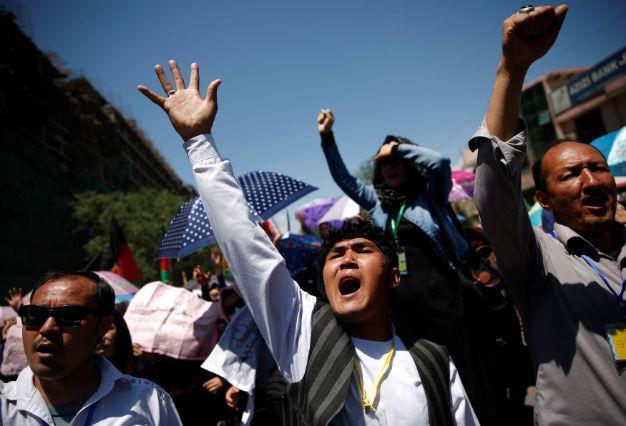Afghan capital locked down for massive demonstration
KABUL - The Associated Press

REUTERS photo
Authorities locked down Afghanistan’s capital May 16 as tens of thousands of members of an ethnic minority group marched through the streets to protest the proposed route of a power line.By early morning, members of the Hazara minority had filled streets leading into central Kabul. But their path to the presidential palace, their intended destination, was blocked armed police and stacked shipping containers, closing off Kabul’s commercial center to all vehicle and foot traffic.
Most of the city’s shops were shuttered and armed police units had taken up positions around the city.
Authorities told protest organizers that the march would be confined to a specific route that would not take them near the presidential palace. A November 2015 demonstration by Hazaras had turned violent.
Daud Naji, a protest leader, said the Hazaras were demanding access to a planned multimillion-dollar regional electricity line. The so-called TUTAP line is backed by the Asian Development Bank with the involvement of Turkmenistan, Uzbekistan, Tajikistan, Afghanistan and Pakistan.
The original plan routed the line through Bamiyan province, in Afghanistan’s central highlands, where most of the country’s Hazaras live. But that route was changed in 2013 by the previous Afghan government.
Leaders of the May 16 demonstration have called the routing of the line away from their territory evidence of enduring bias against the Hazara minority. Hazaras account for up to 15 percent of Afghanistan’s estimated 30 million-strong population, which are considered the poorest of the country’s ethnic groups, and often complain of discrimination.
Bamiyan is poverty stricken, though it is largely peaceful and has potential as a tourist destination. Hazaras, most of whom are Shiite Muslims, have been persecuted in the past, notably by the extremist Sunni Taliban’s 1996-2001 regime.
Afghanistan is desperately short of power, with less than 40 percent of the population connected to the grid, according to the World Bank. Almost 75 percent of the country’s power is imported.
















